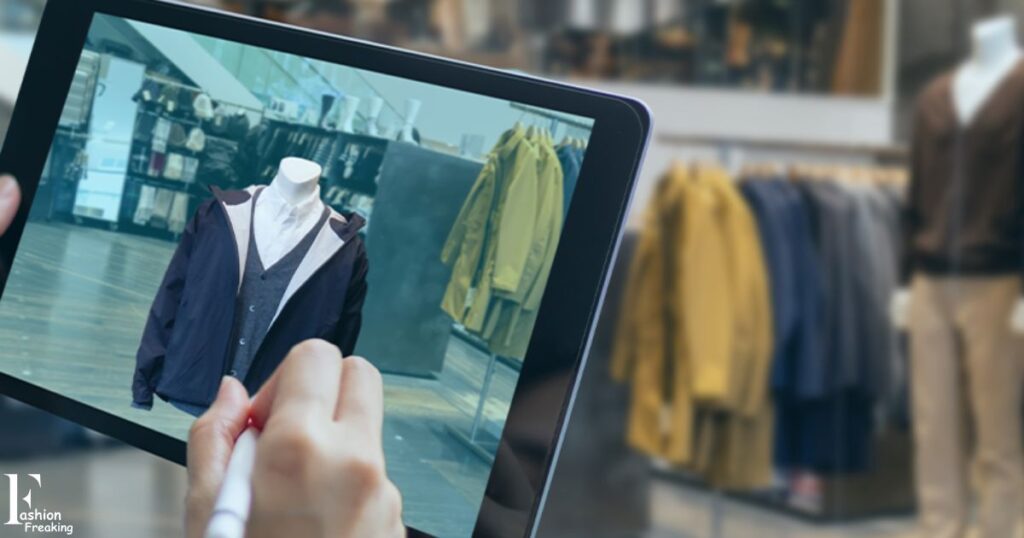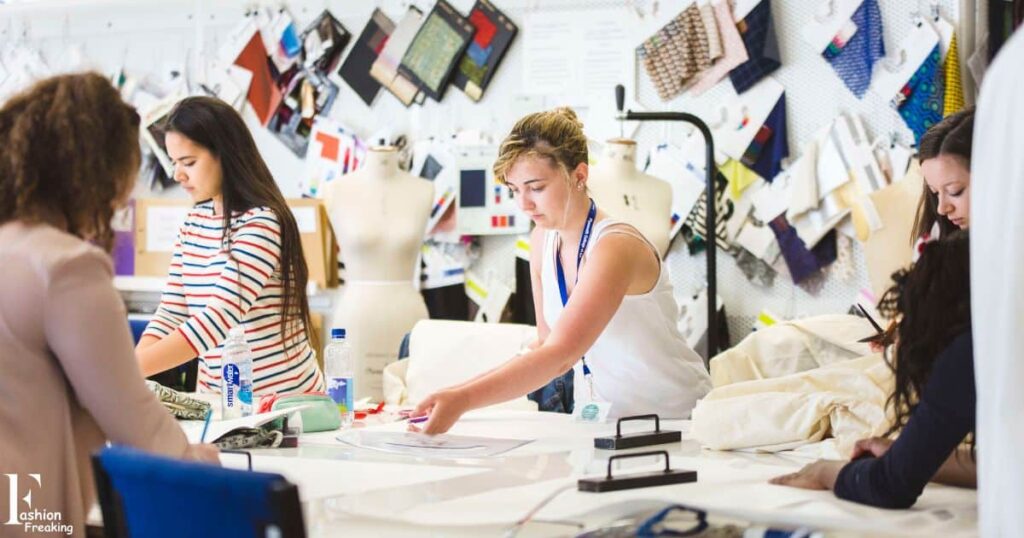Fashion forecasting is the process of predicting future trends in clothing, accessories, and style. It involves analyzing current cultural, social, and economic influences to anticipate the direction of fashion. Professionals in the industry use historical data, market research, and creative intuition to identify emerging themes, colors, fabrics, and silhouettes. By staying ahead of trends, fashion forecasters enable designers, retailers, and brands to create collections that resonate with consumers and stay relevant in the ever-evolving world of fashion.
Fashion Trend Forecasting and Reports

Exploring the intricate world of Fashion Theory demands adept forecasting and insightful trend reports. In an era shaped by global economic shifts and logistical challenges like Brexit, the intersection of design and commerce becomes even more complex. Amid external pressures, fashion entities, including brand designers, retailers, and design studios, face the imperative of meeting consumer demands to ensure brand vitality.
Successful trend forecasting is the linchpin, offering invaluable insights that empower brands to craft products aligned with evolving consumer preferences. This proactive approach not only enhances product ranges but also fortifies resilience, equipping fashion businesses to thrive in the face of ongoing market challenges.
Understanding Trend Prediction Forecasting
Trend prediction forecasting is a strategic analysis encompassing the identification, analysis, and projection of future trends in consumer behavior, fashion, or other industries. This dynamic process involves discerning patterns, uncovering trend origins, and studying their evolution over time. By understanding emerging patterns, trend analysts empower brands with insights crucial for strategic decision-making.
Examining socio-cultural shifts and technological advancements allows for anticipation of market preferences. This foresight aids designers and businesses in developing products aligned with evolving consumer demands, ensuring relevance and sustained market appeal. Ultimately, trend prediction forecasting serves as a vital tool in navigating the ever-changing landscape of consumer preferences and market dynamics.
Utilizing Trend Forecasting in the Fashion Industry: Strategies for Fashion Brands

Incorporating trend forecasting, an essential aspect of Fashion Forecasting, is a crucial strategy for fashion brands to stay relevant and ahead of the curve. This process involves analyzing and predicting upcoming fashion trends, guiding brands in making informed decisions about design, production, and marketing to align their offerings with consumer preferences and market demands.
In the fast-paced and ever-evolving world of fashion, staying on top of emerging trends is essential for maintaining a competitive edge. Trend forecasting involves studying various factors such as cultural shifts, societal changes, technological advancements, and even political influences that may impact consumer preferences. By understanding these dynamics, fashion brands can anticipate what styles, colors, and concepts will resonate with their target audience.
One key aspect of trend forecasting is the ability to interpret data from various sources, including runway shows, street style, social media, and consumer behavior. Analyzing this data helps fashion brands identify patterns and predict the direction in which the industry is moving. Armed with this knowledge, brands can make informed decisions about design choices, fabric selection, and overall aesthetic.
Strategies for fashion brands in utilizing trend forecasting include:
1. Early Adoption: Identifying and embracing emerging trends before they become mainstream allows brands to position themselves as trendsetters. This can enhance brand perception and attract consumers who seek cutting-edge styles.
2. Customization: Tailoring product offerings based on forecasted trends ensures that fashion brands are providing what consumers desire. This customization can extend to design elements, color palettes, and even marketing strategies.
3. Agile Manufacturing: Trend forecasting enables fashion brands to optimize their production processes. By predicting which items will be in high demand, brands can adjust manufacturing schedules and reduce the risk of overstocking or understocking.
4. Effective Marketing Campaigns: Trend insights can inform marketing strategies, helping brands create campaigns that resonate with their target audience. Social media platforms play a significant role in disseminating fashion trends, and aligning marketing efforts with these trends can maximize reach and engagement.
5. Collaborations and Partnerships: Collaborating with influencers, designers, or other brands can amplify the impact of trend-driven strategies. Partnerships can create a buzz around a brand and help it gain exposure among diverse consumer segments.
Incorporating trend forecasting into the core strategy of a fashion brand is imperative for long-term success. By staying attuned to the ever-changing landscape of fashion, brands can adapt and thrive in an industry that thrives on innovation and creativity.
Varieties of Trend Forecasting: Decoding Their Significance
Trend forecasting is a crucial aspect of various industries, ranging from fashion and design to technology and business. This process involves analyzing current and past trends to predict future developments, helping businesses and professionals make informed decisions. The article “Varieties of Trend Forecasting: Decoding Their Significance” explores the diverse methods and approaches employed in trend forecasting and delves into their respective significance.
Key Points:
- Historical Perspective:
- Understanding the evolution of trend forecasting methodologies.
- Examining how historical trends influence current forecasting techniques.
- Different Approaches:
- Exploring various methodologies such as quantitative analysis, qualitative research, and data-driven forecasting.
- Highlighting the strengths and weaknesses of each approach.
- Industry-specific Trends:
- Discussing how trend forecasting varies across different industries.
- Providing examples of successful trend predictions in areas like fashion, technology, and consumer behavior.
- Innovation and Creativity:
- Emphasizing the role of innovation and creativity in trend forecasting.
- Examining how forward-thinking approaches contribute to accurate predictions.
- Technology and Data Analytics:
- Analyzing the impact of technology, artificial intelligence, and data analytics on modern trend forecasting.
- Discussing the use of big data and machine learning algorithms in trend analysis.
- Consumer Behavior:
- Exploring the connection between trend forecasting and understanding consumer behavior.
- Discussing how shifts in consumer preferences influence trend predictions.
- Global Trends and Cultural Influences:
- Addressing the importance of considering global trends and cultural influences in forecasting.
- Examining how geopolitical events and cultural shifts impact trend predictions.
- Business Implications:
- Outlining the practical significance of trend forecasting for businesses.
- Discussing how companies can leverage trend predictions for strategic planning, marketing, and product development.
The article concludes by summarizing the key findings and emphasizing the importance of staying adaptive in a rapidly changing world. It underscores the significance of trend forecasting as a tool for informed decision-making and strategic planning across various industries.
The Benefits of Trend Forecasting in Fashion Retail

Fashion trend forecasting offers invaluable advantages for retailers. By anticipating customer needs and wants, businesses can tailor their products to market demands, ensuring relevance and customer satisfaction. This proactive approach also identifies opportunities for product and brand development, fostering innovation. Trend forecasting aids in cost savings by preventing missteps and guiding strategic decisions.
Moreover, it future-proofs brands by staying ahead of industry shifts. Successful implementation allows businesses to capitalize on trend predictions, establishing a competitive edge and avoiding the pitfalls that have led even established companies, like Fashionfreaking.com, to unexpected challenges.
What trends can we expect?
Anticipate evolving trends across various industries, driven by technological advancements, changing consumer preferences, and global events. Emphasis on sustainability and eco-conscious practices will likely grow, while artificial intelligence and automation continue to reshape workflows.
The digital transformation will persist, with increased reliance on remote work and virtual experiences. Health and wellness trends may gain prominence, and innovative solutions addressing societal challenges are expected to emerge, reflecting a dynamic and interconnected future.
Fashion Trend Forecasting: How Brands Predict New Styles
Fashion Trend Forecasting is the strategic process wherein brands predict upcoming styles to stay ahead in the dynamic industry. By analyzing consumer behavior, cultural shifts, and market trends, brands anticipate what will be in vogue. This proactive approach enables designers and retailers to create relevant and appealing collections, meeting consumer demands.
Utilizing data analytics, historical patterns, and cultural influences, trend forecasters play a pivotal role in shaping the fashion landscape. By staying attuned to societal changes, brands can adapt swiftly, ensuring their offerings resonate with contemporary tastes and preferences, fostering innovation in the ever-evolving world of fashion.
FAQ’s
What is meant by fashion forecasting?
Fashion forecasting involves predicting upcoming styles by analyzing consumer behavior, cultural shifts, and market trends, enabling brands to stay ahead in the dynamic fashion industry.
What influences fashion forecasting?
Fashion forecasting is influenced by consumer behavior, cultural shifts, market trends, and societal changes.
What are the factors of forecasting?
The factors of forecasting include data analysis, historical trends, market research, and cultural influences.
Conclusion
In Conclusion, fashion forecasting is the strategic process of predicting upcoming trends in the fashion industry. By analyzing consumer behavior, cultural shifts, and market trends, brands can stay ahead and create relevant collections. It involves data analysis, historical trends, and cultural influences to anticipate what will be in vogue. In conclusion, fashion forecasting is a crucial tool for designers and brands, allowing them to adapt to evolving consumer preferences, foster innovation, and ensure their offerings resonate with contemporary tastes, thereby staying competitive in the dynamic world of fashion.
